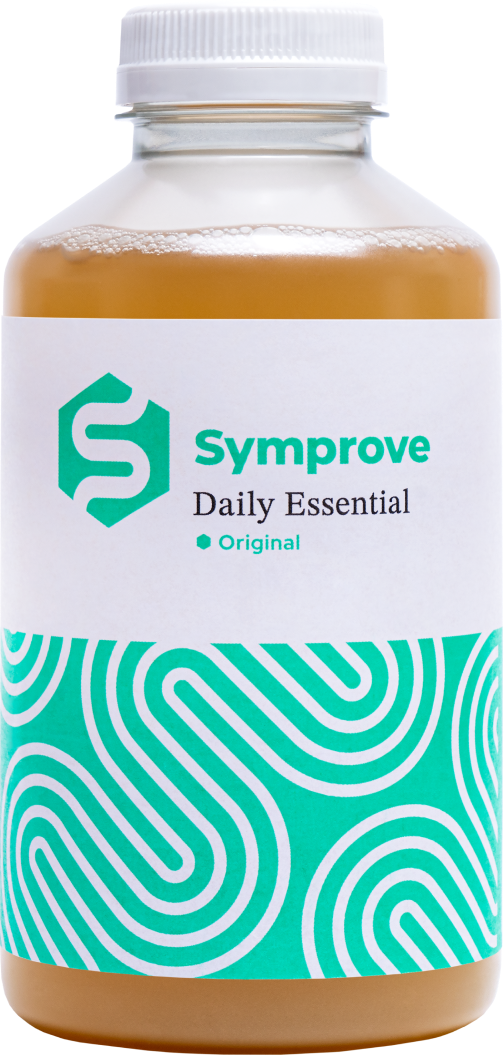UTI: incidence, clinical/health impacts
Urinary tract infection (UTI) accounts for 1–3% of primary care consultations and approximately 14% of community antibiotic prescriptions in the UK [1]. Global UTIs affects around 92 million people annually [2]. Women are vulnerable to UTIs because of their anatomical structure. At least 50% of women will experience a UTI in their lifetime with up to 30% experiencing at least one recurrence, and 25% of these develop ongoing recurrent episodes (rUTIs)[3] (defined as 3 or more UTIs in the last 12 months or 2 or more in the last 6 months). All UTIs have a major impact on quality of life and healthcare cost burden due to increased primary care consultations, antibiotic prescribing, outpatient visits and diagnostic tests [4]. In some cases, the consequences can be severe as an infection can ascend to the kidneys and lead to pyelonephritis and life-threatening urosepsis.
UTI treatment
A common way to treat urinary infections is a low daily dose of antibiotics. But with on-going repeated courses for rUTIs there is a risk of UTI associated antimicrobial resistance (AMR) [5]. In addition antibiotics cause short-term side effects (e.g., diarrhoea, candidiasis) and significant non-specific microbial disruption that is associated with long-term effects such as depression, anxiety, psychosis [6], immune dysfunction, obesity and diabetes [7]. Resident commensal microbes can take up to four years to return to normal [8]. Limiting the use of antibiotic treatment is a complex problem that might require a broad range of interventions and innovative approaches to protect resident microbes in the gastrointestinal tract (gut), urinary tract (UT) and urogenital tract (UGT) including the vagina.
Role of microbes in UTIs
The human gut microbiota contains more than 10 trillion microbes and enormous diversity [9]. The microbial flora plays a broad role in a healthy host physiology and immune protection [9-12]. Disruption of gut microbiota is related to many disorders, such as obesity [13], diabetes [14], rheumatoid arthritis [15] and gastrointestinal diseases [16]. UTIs affect mainly women as they have a shorter urethra compared to men which means that gut bacteria are more likely to reach the bladder or kidneys and cause an infection. Commensal microbes that normally reside in the lower gastrointestinal tract can cause uncomplicated UTIs such as Klebsiella pneumoniae, Enterobacteriaceae also to a lesser extent Proteus mirabilis and fungi [17]. The most common pathogen is uropathogenic Escherichia coli (UPEC) which express fimbriae that attach to glycolipids and glycoproteins on the host uroepithelial surface [18]. This allows the pathogen to overcome the flow of urine and persist in the urinary tract. They can internalize and divide inside epithelial cells, creating a reservoir for recurrent infection [19]. Pathogens also produce toxins and colony-necrotizing factors which disrupt host epithelial integrity, which allows bacterial invasion, augmenting infection risk [20] and out competing the natural microbial flora of the UT and UGT.
Microbes found in the vagina play a major role in the maintenance of urogenital health acting as a reservoir for commensal species that protect against UTIs [21, 22]. Lactobacilli can prevent the adherence, growth and colonization of uropathogenic E. coli [23]. Postmenopausal women are more susceptible to urogenital infections due to a decrease in vaginal Lactobacilli, providing further evidence of their protective effects [24]. Therefore, any changes to the microbial flora within the UT and UGT may increase susceptibility to urinary tract infection so adjusting the natural flora back to its original state is preferable.
In the case of rUTI there are two possible mechanistic patterns of infection, (a) repeated ascending infections from outside the urinary tract (UT) or (b) re-emergence from a persistent microbial population residing within the UT [25]. During an episode, the infection is interspersed with periods of remission [26]. The mechanistic pathobiology of rUTI is not completely understood so elucidating the role of microbes in the UT and UGT is a hot topic for the development of novel UTI non-antibiotic therapeutic prevention strategies.
Probiotic prophylaxis of rUTIs
Probiotics are defined as ‘a preparation of microorganisms in sufficient numbers to alter the microflora of a host compartment (e.g., vagina) and that exert beneficial health effects in this host’ [27]. Probiotics containing Lactobacilli species can be taken by mouth, from where they can successfully survive the low pH of the stomach, passage through the gut and ascend the vagina without functional assistance. Many health benefits have been ascribed to probiotics as a biotherapy for the prevention of disease development [28]. A combination of Lactobacilli strains taken orally have shown potential to reduce rUTIs in both pre- and post-menopausal women [29] and colonise the vagina as effectively as direct vaginal applications. A randomised controlled trial testing the oral use of Lactobacilli in healthy women reported a reduction in colonisation of the vagina by potential pathogenic bacteria [29]. Other compounds can be used for rUTI prophylaxis such as the sugar D-mannose and cranberry juice or powder products [30, 31]. This does not mean that the mechanisms of action are the same for all probiotics or other compounds, nor that precise mechanisms have been elucidated. Some bacterial strains interact with the host using multiple mechanisms and likewise there are many potential host responses. Previous studies have shown that many women with rUTIs would welcome probiotics as an alternative to antibiotics, to reduce the use of antibiotics and avoid their adverse effects [32]. Probiotics are relatively low-cost with an excellent safety record and already often purchased over-the-counter by the general population [33].
Symprove
Symprove is a liquid probiotic formulation containing a mix of live bacterial strains including three Lactobacillus species. Liquid probiotics are superior to capsules or tablet as a greater number of fast acting live bacteria are more likely to be delivered to the intestine which can also be transferred to the UGT and vagina. As Symprove contains several different Lactobacilli species, it is possible that the consumption of this product may improve the management of urinary health of frequent UTI sufferers. Furthermore, this product contains components which may enhance the growth of indigenous beneficial gut bacteria that may also transfer to the UGT and vagina to provide a protective commensal barrier. These hypotheses are currently being tested in controlled trials.
Summary
In summary, UTIs are a common, distressing condition, for which patients frequently seek primary care assistance and antibiotics. But with growing concerns about AMR and long-term antibiotic side effects, a safe, cost-effective non-antibiotic strategy is urgently needed for rUTI prophylactic management. Probiotics such as Symprove combined with Cranberry and or D-mannose could enhance beneficial commensals and improve the quality of life for suffers of rUTIs.
Further reading
A comprehensive review of all urinary trials with a range of prophylactic probiotics has been carried out by the European Association of Urology (2022) [34].
References
- Bilsen, M.P., M. Lambregts, and S. Conroy, Guideline commentary on updated NICE guidelines for urinary tract infections. Age Ageing, 2023. 52(3).
- Improving urinary tract infection treatment in peoples’ homes, in The Atlas of Shared Learning, NHS. 2018.
- Kwok, M., et al., Guideline of guidelines: management of recurrent urinary tract infections in women. BJU Int, 2022. 130 Suppl 3(Suppl 3): p. 11-22.
- Foxman, B., Epidemiology of urinary tract infections: incidence, morbidity, and economic costs. Dis Mon, 2003. 49(2): p. 53-70.
- J, O.N., Tackling drug-resistant infections globally: final report and recommendations. Review on Antimicrobial Resistance, in AMR reviews. 2016.
- Denny, J.E., W.L. Powell, and N.W. Schmidt, Local and Long-Distance Calling: Conversations between the Gut Microbiota and Intra- and Extra-Gastrointestinal Tract Infections. Front Cell Infect Microbiol, 2016. 6: p. 41.
- Cox, L.M. and M.J. Blaser, Antibiotics in early life and obesity. Nat Rev Endocrinol, 2015. 11(3): p. 182-90.
- Jakobsson, H.E., et al., Short-term antibiotic treatment has differing long-term impacts on the human throat and gut microbiome. PLoS One, 2010. 5(3): p. e9836.
- Valdes, A.M., et al., Role of the gut microbiota in nutrition and health. BMJ, 2018. 361: p. k2179.
- Campbell, C., et al., Crosstalk between Gut Microbiota and Host Immunity: Impact on Inflammation and Immunotherapy. Biomedicines, 2023. 11(2).
- Lukacova, I., et al., The gut microbiota, its relationship to the immune system, and possibilities of its modulation. Epidemiol Mikrobiol Imunol, 2023. 72(1): p. 40-53.
- De Filippo, C., et al., Gut microbiota and oleoylethanolamide in the regulation of intestinal homeostasis. Front Endocrinol (Lausanne), 2023. 14: p. 1135157.
- Turnbaugh, P.J., et al., An obesity-associated gut microbiome with increased capacity for energy harvest. Nature, 2006. 444(7122): p. 1027-31.
- Mojsak, P., et al., The role of gut microbiota (GM) and GM-related metabolites in diabetes and obesity. A review of analytical methods used to measure GM-related metabolites in fecal samples with a focus on metabolites' derivatization step. J Pharm Biomed Anal, 2020. 191: p. 113617.
- Rasouli-Saravani, A., et al., Role of microbiota short-chain fatty acids in the pathogenesis of autoimmune diseases. Biomed Pharmacother, 2023. 162: p. 114620.
- Hodgkinson, K., et al., Butyrate's role in human health and the current progress towards its clinical application to treat gastrointestinal disease. Clin Nutr, 2023. 42(2): p. 61-75.
- Flores-Mireles, A.L., et al., Urinary tract infections: epidemiology, mechanisms of infection and treatment options. Nat Rev Microbiol, 2015. 13(5): p. 269-84.
- Behzadi, P., Classical chaperone-usher (CU) adhesive fimbriome: uropathogenic Escherichia coli (UPEC) and urinary tract infections (UTIs). Folia Microbiol (Praha), 2020. 65(1): p. 45-65.
- Kim, W.J., et al., Uropathogenic Escherichia coli invades bladder epithelial cells by activating kinase networks in host cells. J Biol Chem, 2018. 293(42): p. 16518-16527.
- Meziani, D.Y., et al., Identification of Virulence Markers and Phylogenetic Groups' Association, and Antimicrobial Susceptibility of Uropathogenic Escherichia coli Isolates. Infect Disord Drug Targets, 2023. 23(2): p. 21-31.
- Saraf, V.S., et al., Vaginal microbiome: normalcy vs dysbiosis. Arch Microbiol, 2021. 203(7): p. 3793-3802.
- White, B.A., et al., The vaginal microbiome in health and disease. Trends Endocrinol Metab, 2011. 22(10): p. 389-93.
- Mancuso, G., et al., Urinary Tract Infections: The Current Scenario and Future Prospects. Pathogens, 2023. 12(4).
- Raz, R. and W.E. Stamm, A controlled trial of intravaginal estriol in postmenopausal women with recurrent urinary tract infections. N Engl J Med, 1993. 329(11): p. 753-6.
- Glover, M., et al., Recurrent urinary tract infections in healthy and nonpregnant women. Urol Sci, 2014. 25(1): p. 1-8.
- Jhang, J.F. and H.C. Kuo, Recent advances in recurrent urinary tract infection from pathogenesis and biomarkers to prevention. Ci Ji Yi Xue Za Zhi, 2017. 29(3): p. 131-137.
- Schrezenmeir, J. and M. de Vrese, Probiotics, prebiotics, and synbiotics--approaching a definition. Am J Clin Nutr, 2001. 73(2 Suppl): p. 361S-364S.
- Dahiya, D. and P.S. Nigam, Biotherapy Using Probiotics as Therapeutic Agents to Restore the Gut Microbiota to Relieve Gastrointestinal Tract Inflammation, IBD, IBS and Prevent Induction of Cancer. Int J Mol Sci, 2023. 24(6).
- Schwenger, E.M., A.M. Tejani, and P.S. Loewen, Probiotics for preventing urinary tract infections in adults and children. Cochrane Database Syst Rev, 2015. 2015(12): p. CD008772.
- Straub, T.J., et al., Limited effects of long-term daily cranberry consumption on the gut microbiome in a placebo-controlled study of women with recurrent urinary tract infections. BMC Microbiol, 2021. 21(1): p. 53.
- De Nunzio, C., et al., Role of D-Mannose in the Prevention of Recurrent Uncomplicated Cystitis: State of the Art and Future Perspectives. Antibiotics (Basel), 2021. 10(4).
- Leydon, G.M., et al., Women's views about management and cause of urinary tract infection: qualitative interview study. BMJ, 2010. 340: p. c279.
- Flower, A., F.L. Bishop, and G. Lewith, How women manage recurrent urinary tract infections: an analysis of postings on a popular web forum. BMC Fam Pract, 2014. 15: p. 162.
- G. Bonkat, R.B., F. Bruyère, T. Cai, S.E. Geerlings, B. Köves, S. Schubert, A. Pilatz, R. Veeratterapillay, F. Wagenlehner, W. Devlies, J. Horváth, G. Mantica, T. Mezei, B. Pradere, E.J. Smith, EAU Guidelines on Urological Infections, in EAU Guidelines. Edn. presented at the EAU Annual Congress Amsterdam, the Netherlands 2022.


